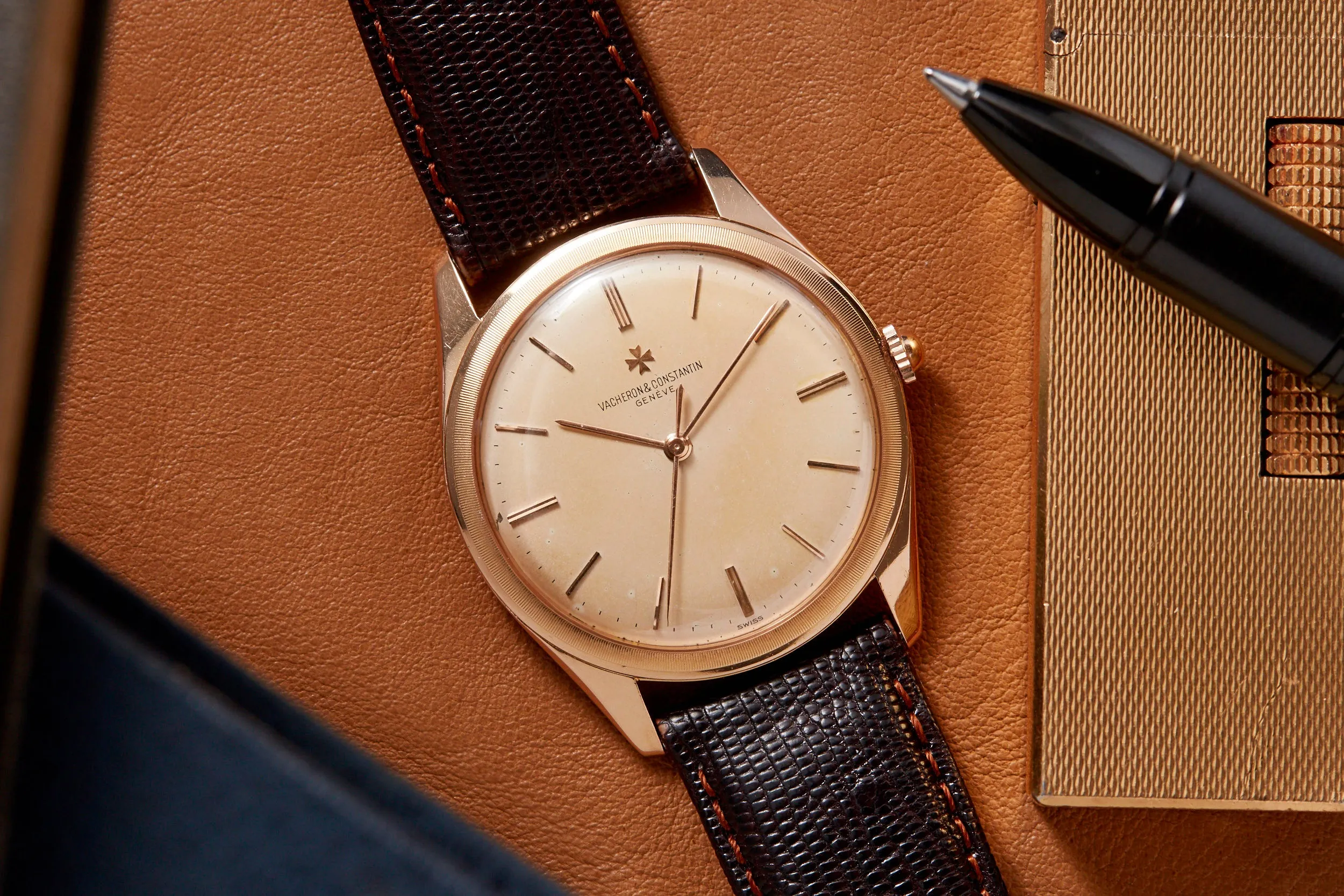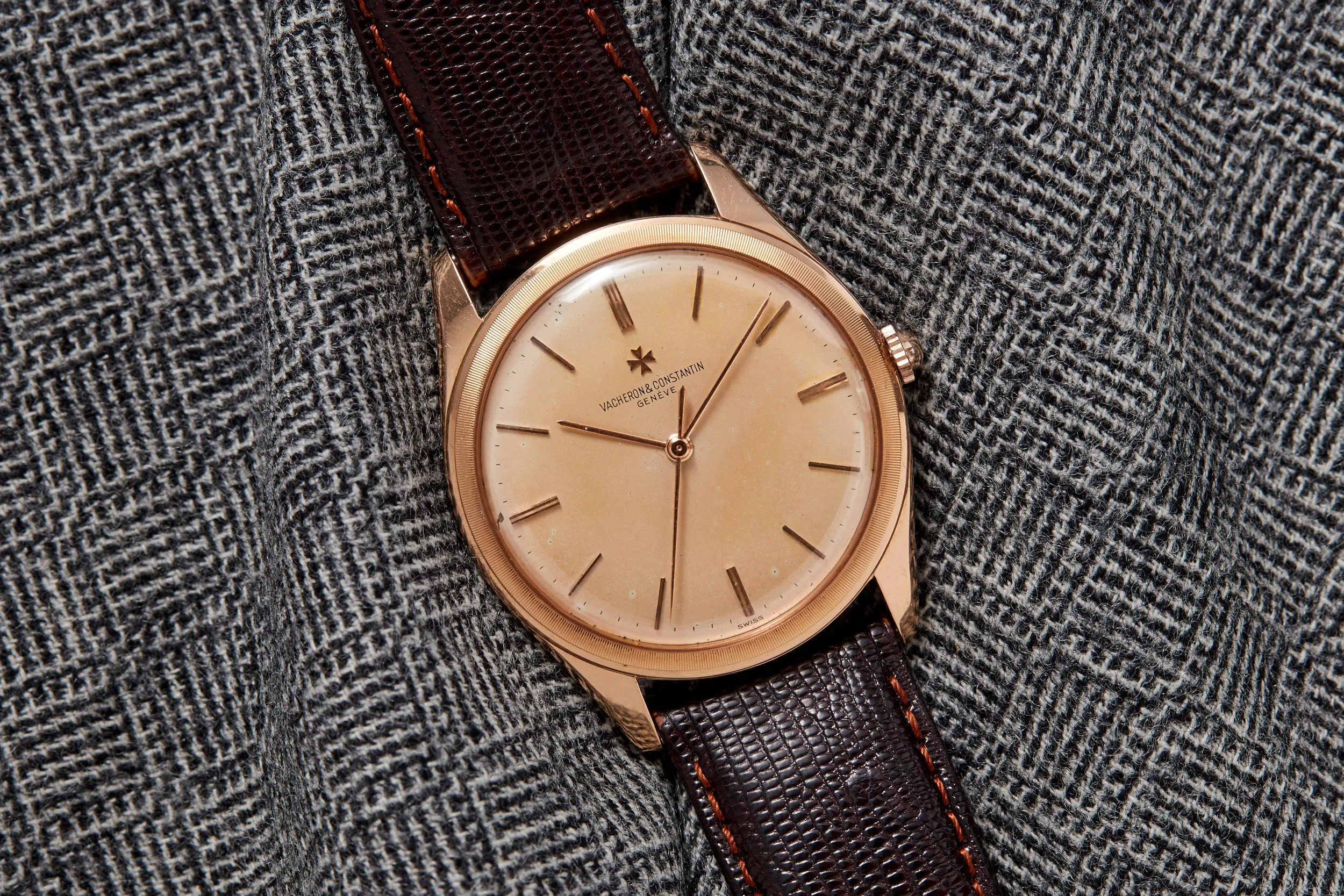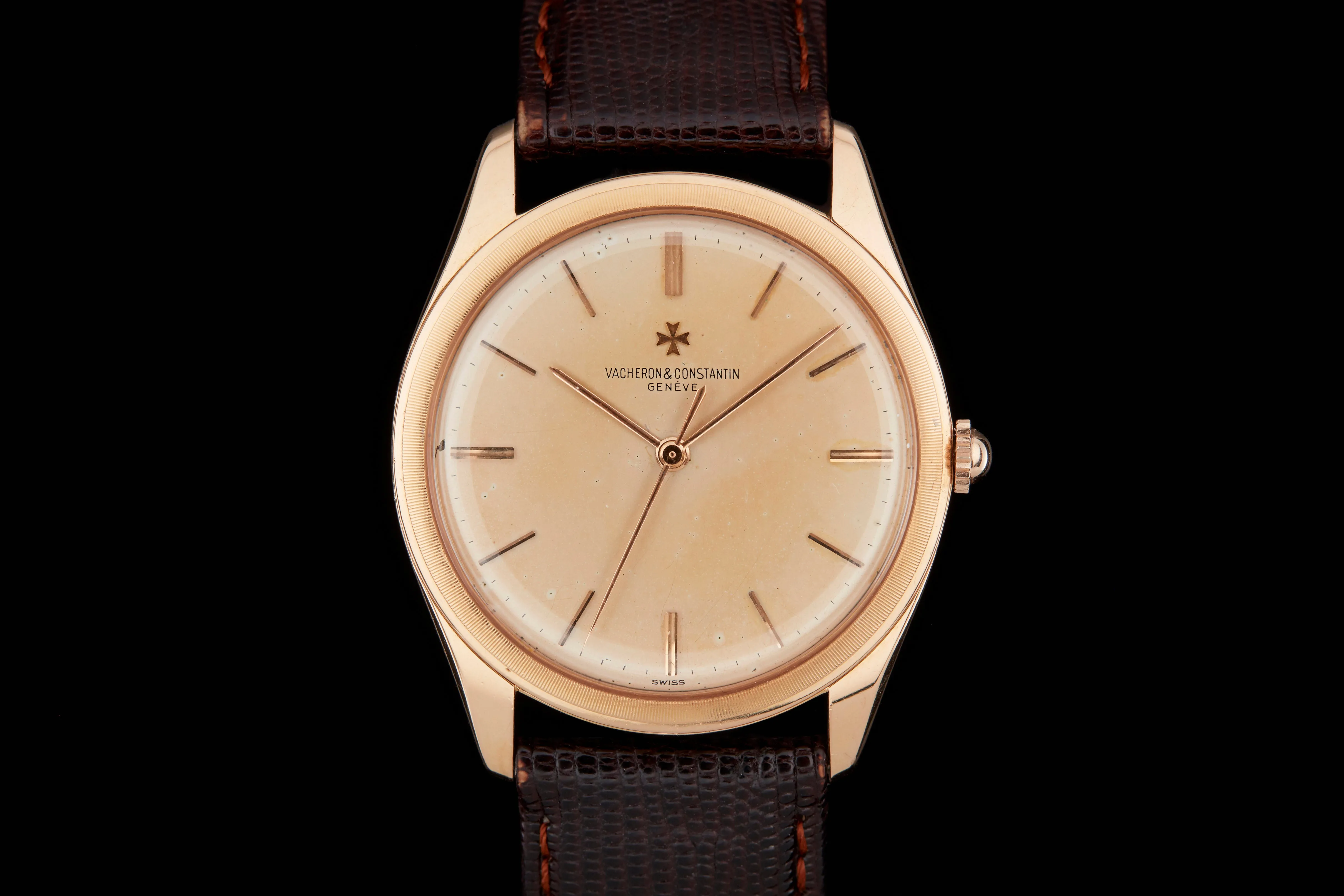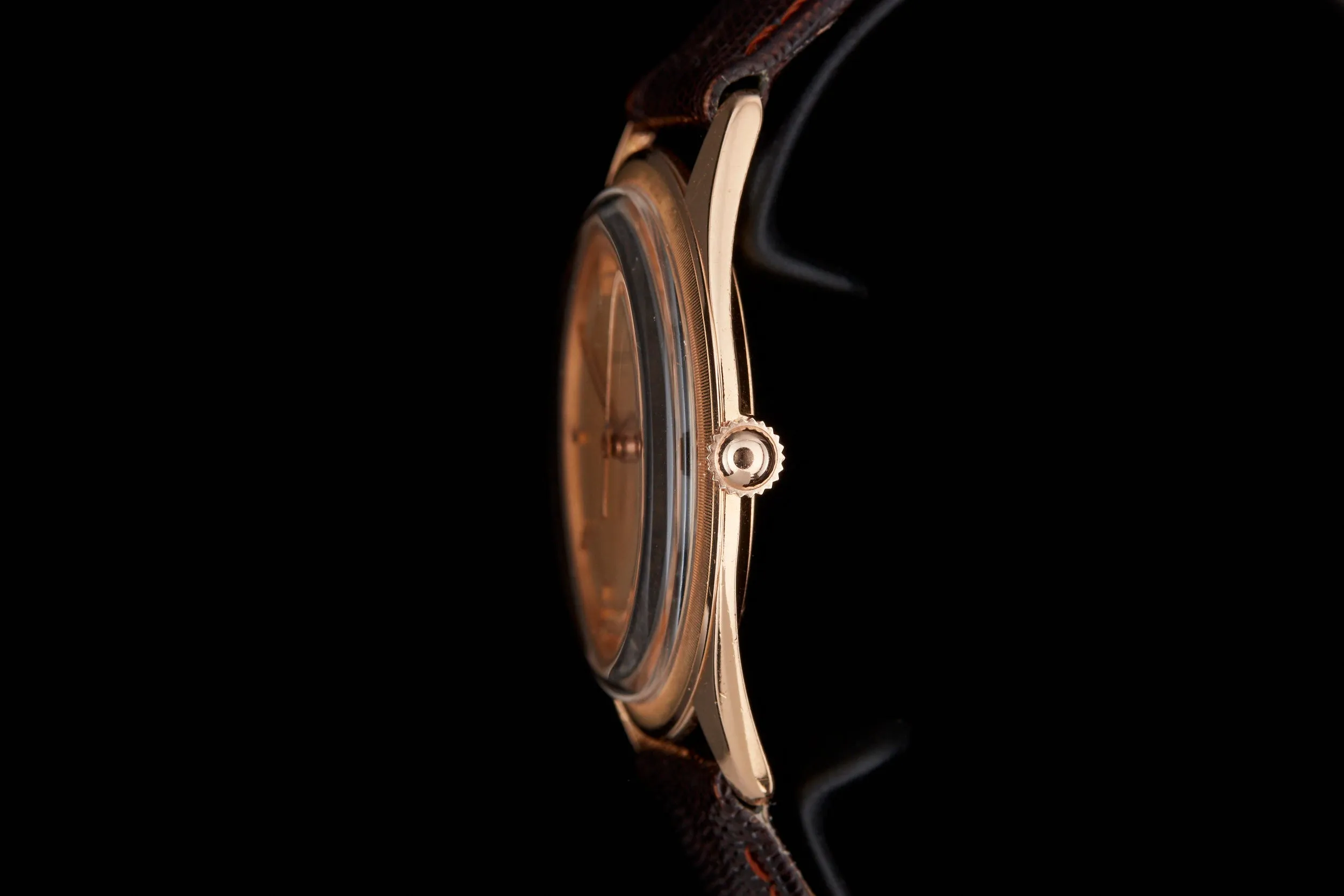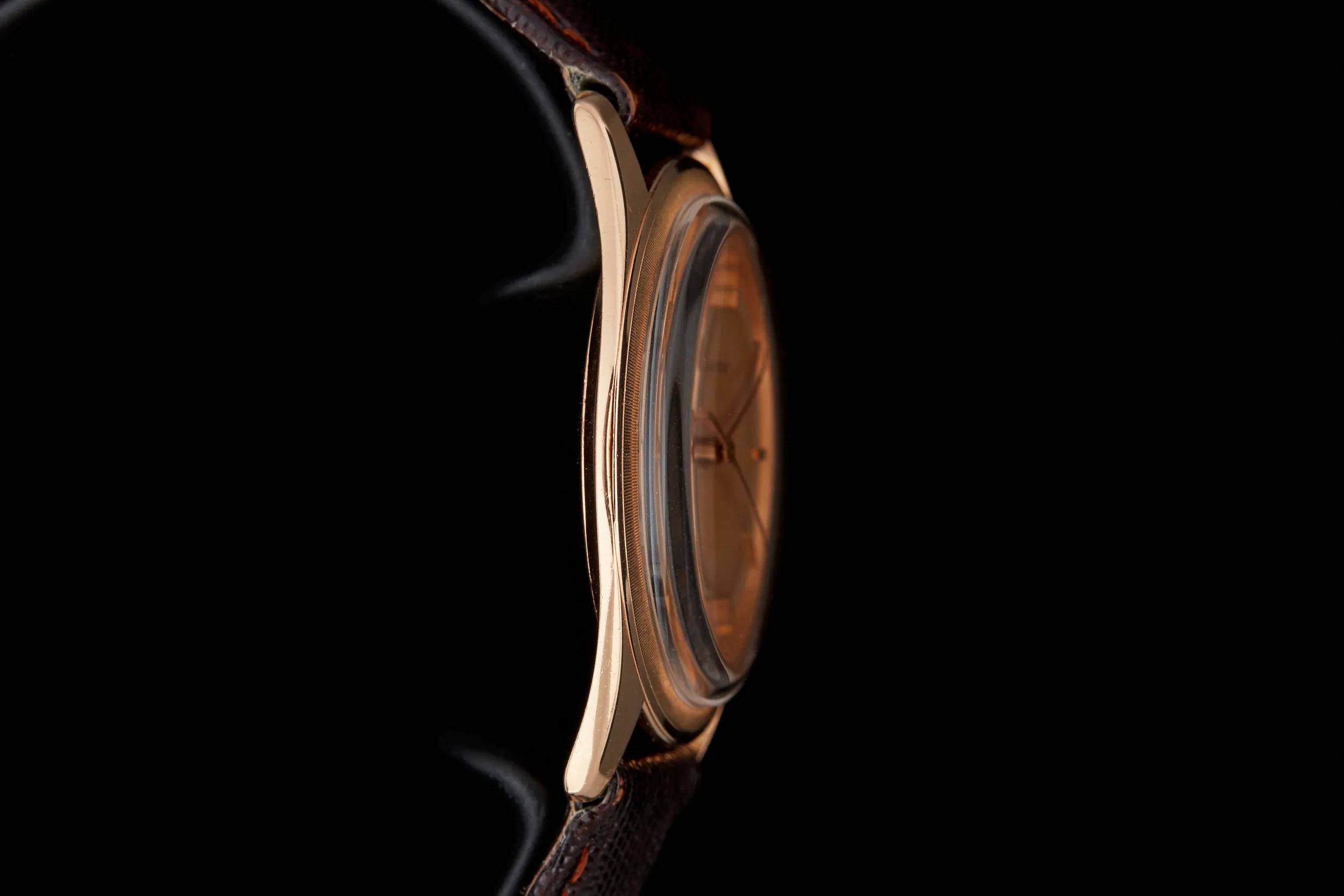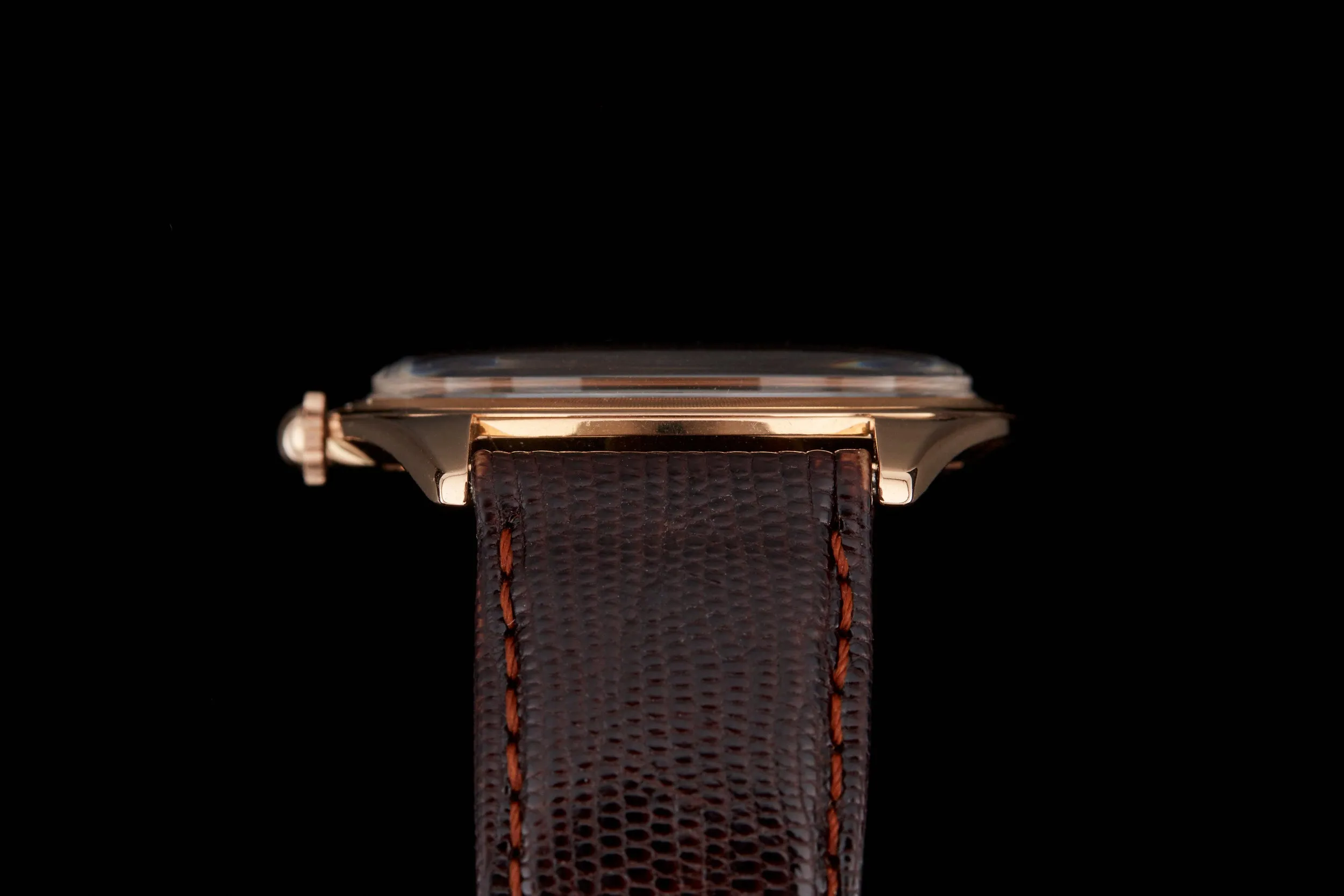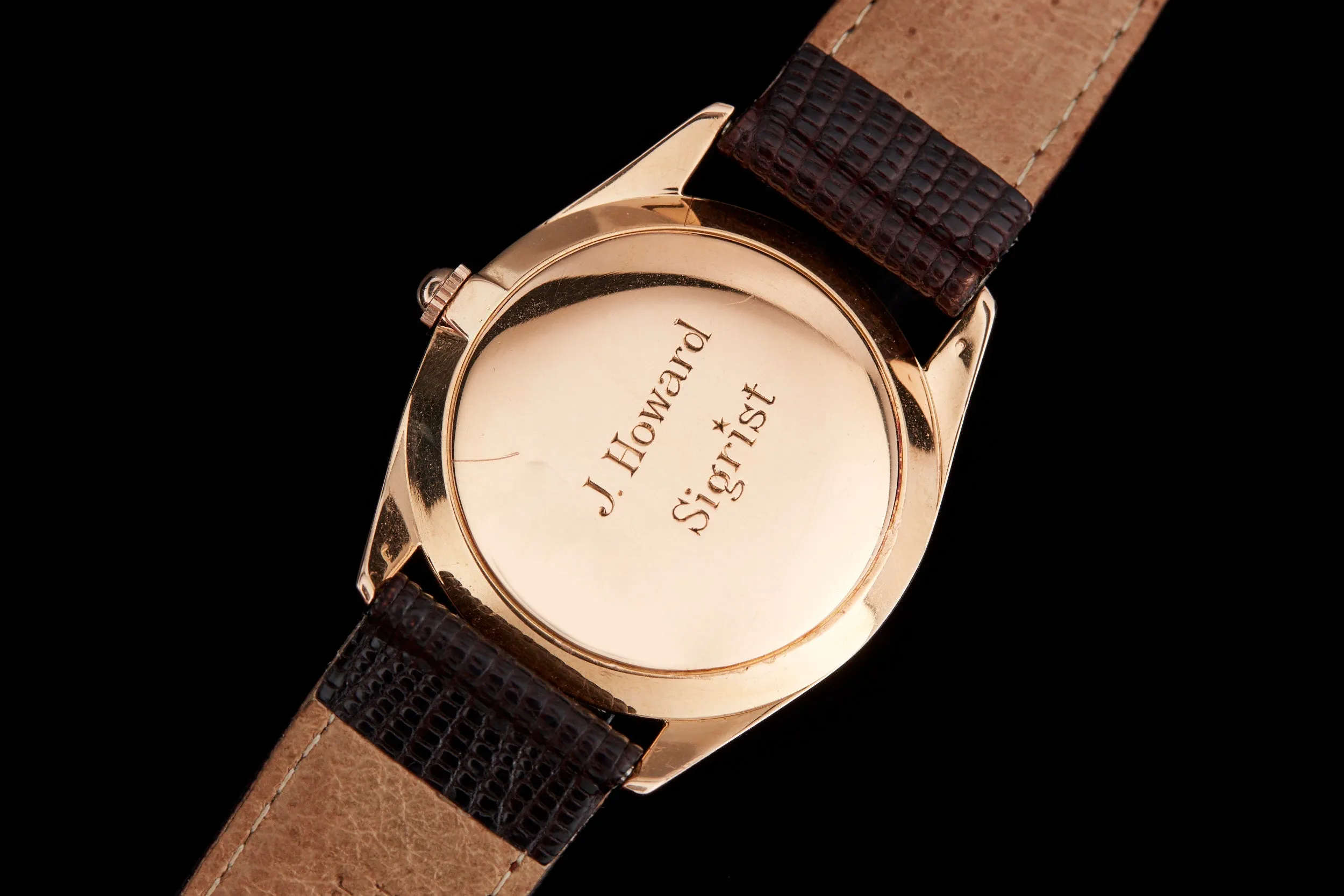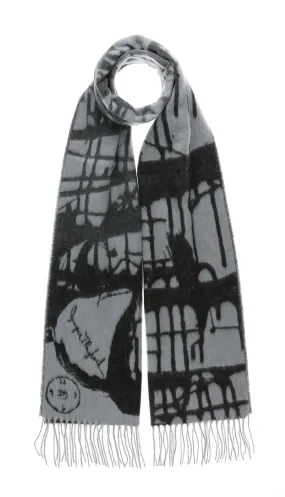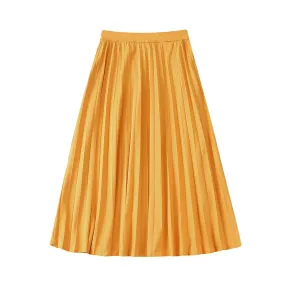A gentle sun shines on the city. Locals on their way to work mill about amid the cacophony of daily life. Above the fray, a man is just sitting down to his morning hot chocolate and croissant.
The morning’s papers lay in front of him, the ink on their pages still crisp and unsullied. With a mouthful of pastry, he surveys the headlines. The Americans, it seems, have managed to harness the power of the atom—this time in a nuclear-powered submarine, the world’s first.
With tensions on the rise between East and West, so soon after the last war, the image of this submarine silently slinking up and down the world’s coastlines is enough to give him pause. He swallows his croissant and turns the page. An ad catches his eye: it’s of a watch, elegant and gold—and, above all, thin.
The thinnest, in fact, if the advertisement is to be believed.
La montre la plus plate du monde. The words were a clarion call, a triumphant trumpeting of a venerable manufacture’s latest feat. The flattest watch in the world.
The man glances down at his bare wrist beneath his shirt cuff. True, he had been meaning to buy a new watch, ever since his last one broke. He tears the ad from the paper and tucks it into his coat pocket.
After finishing his breakfast, he dons his hat and descends the winding staircase to the street. A glimpse of a street clock tells him that there’s still some time left before he’s expected at the office. Just enough, he thinks, to buy that watch.
Although our gentleman is fictional, he might very well have existed. 1955 marked the bicentennial of Vacheron Constantin, then—as now—one of the most venerated of Swiss watch manufactures. An ad like the one in our story did appear that year, announcing the creation of “the flattest watch in the world,” which was powered by the Calibre 1003.
Vacheron had long been at the fore of producing thin watches, thanks in part to its relationship with Jaeger-LeCoultre. Changing tastes in the early 19th-century had called for tighter-fitting clothes, which necessitated slimmer watches, and Edmond Jaeger was among the first watchmakers to answer that call. Now, though watches had migrated to the wrist, the taste for thin watches remained the same. It wasn’t long before the manufacture from Le Sentier entered into exclusive agreements to provide ultra-thin calibres to other manufactures—Vacheron among them. The movement that powered the “flattest watch in the world,” the Calibre 1003, first saw life as JLC’s Calibre 803, which JLC provided exclusively to Vacheron and Audemars Piguet.
This watch, a Reference 6361, is powered by the Calibre 1002, a cousin of the Calibre 1003 that was also made by Jaeger-LeCoultre. At 2.94mm thin (as opposed to the Calibre 1003’s 1.64mm), the Calibre 1002 is not an ultra-thin calibre, but it’s still thin enough to merit praise. In an industry where parts are minuscule enough as it is, it takes true expertise to construct a thin watch.
With an 18k pink gold case with a coin-edge bezel, this watch radiates with strong mid-century vibes. The austerity of the dial’s elegant stick markers call to mind the Patek Philippe Calatrava. But the cross at 12 o’clock says it all—it signifies that this is from Vacheron at the zenith of its power, a mark of refinement, as it is for the person who wears it.

 Cart(
Cart(